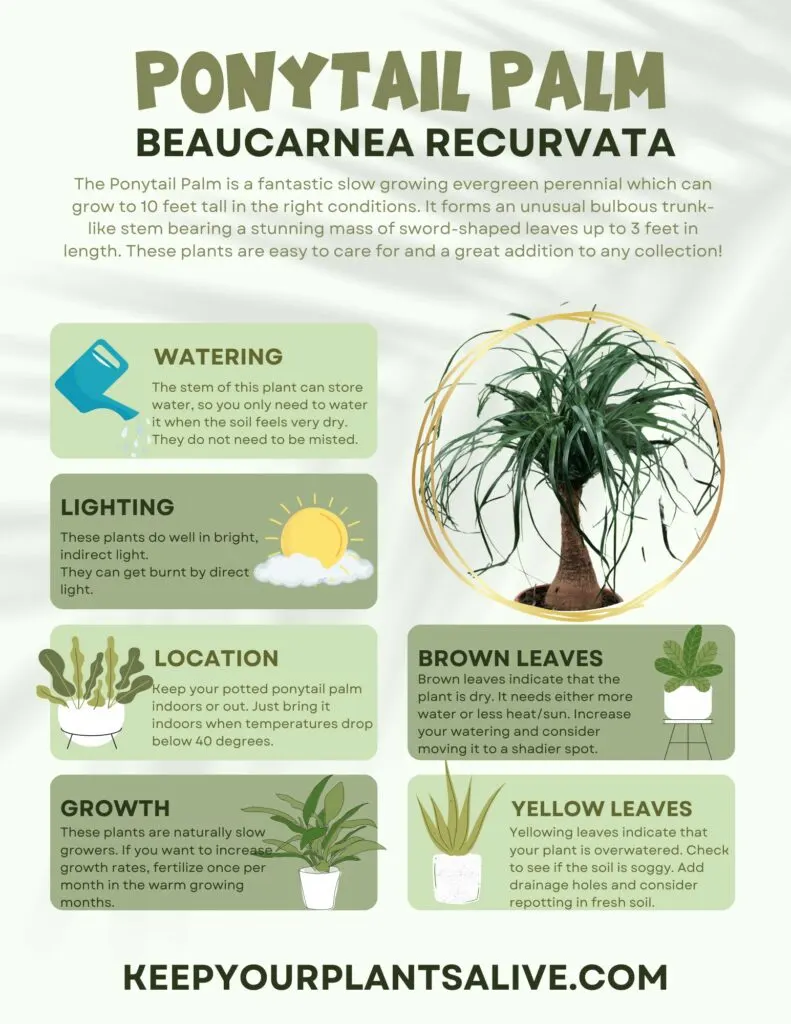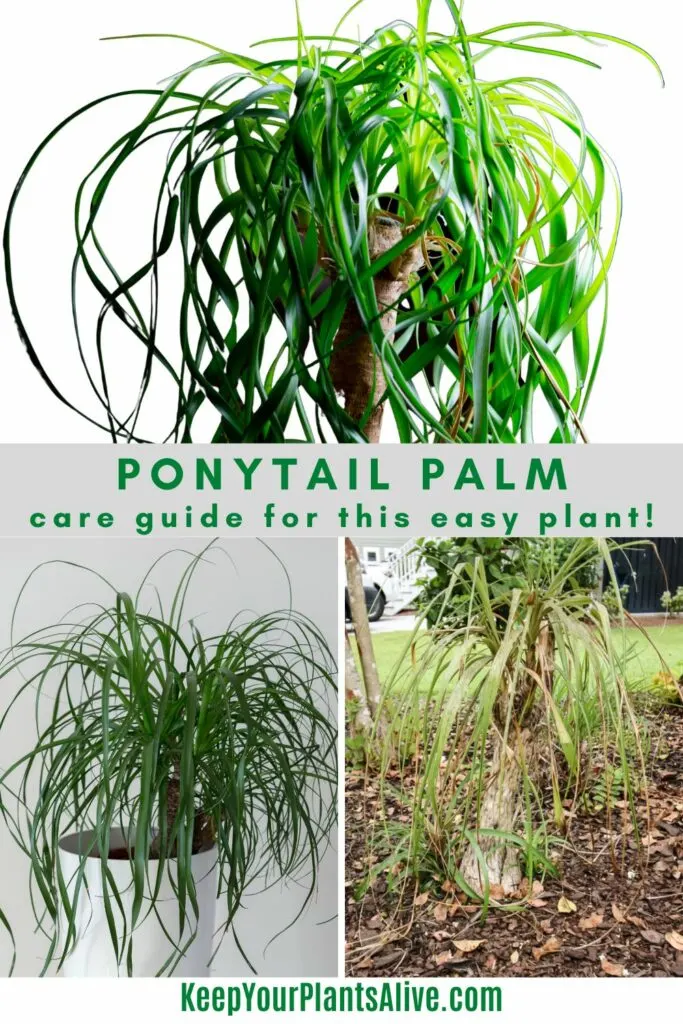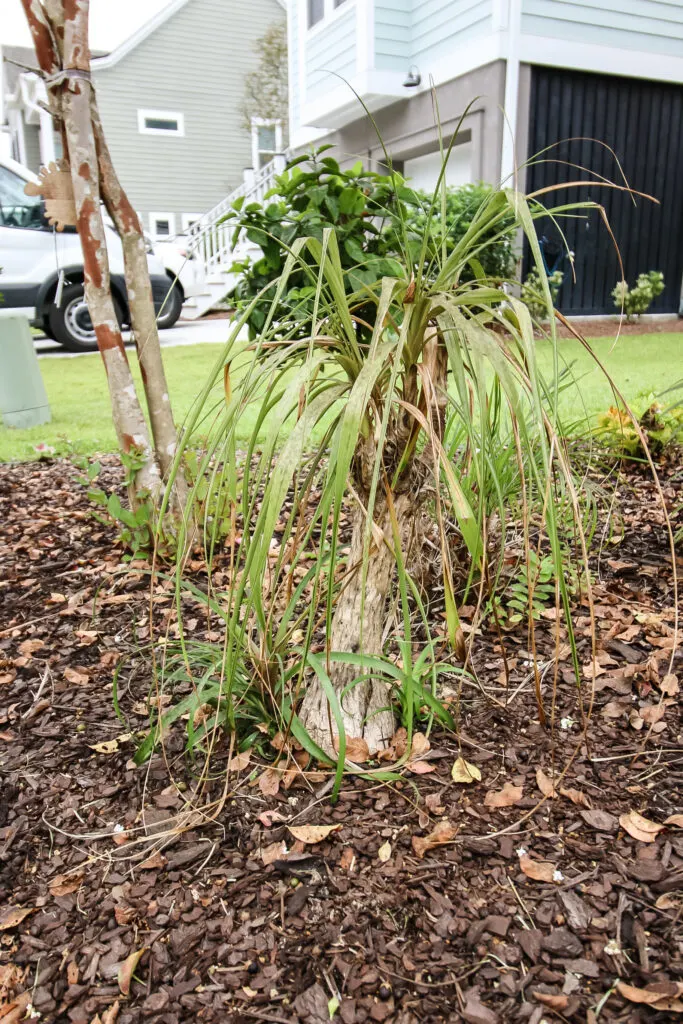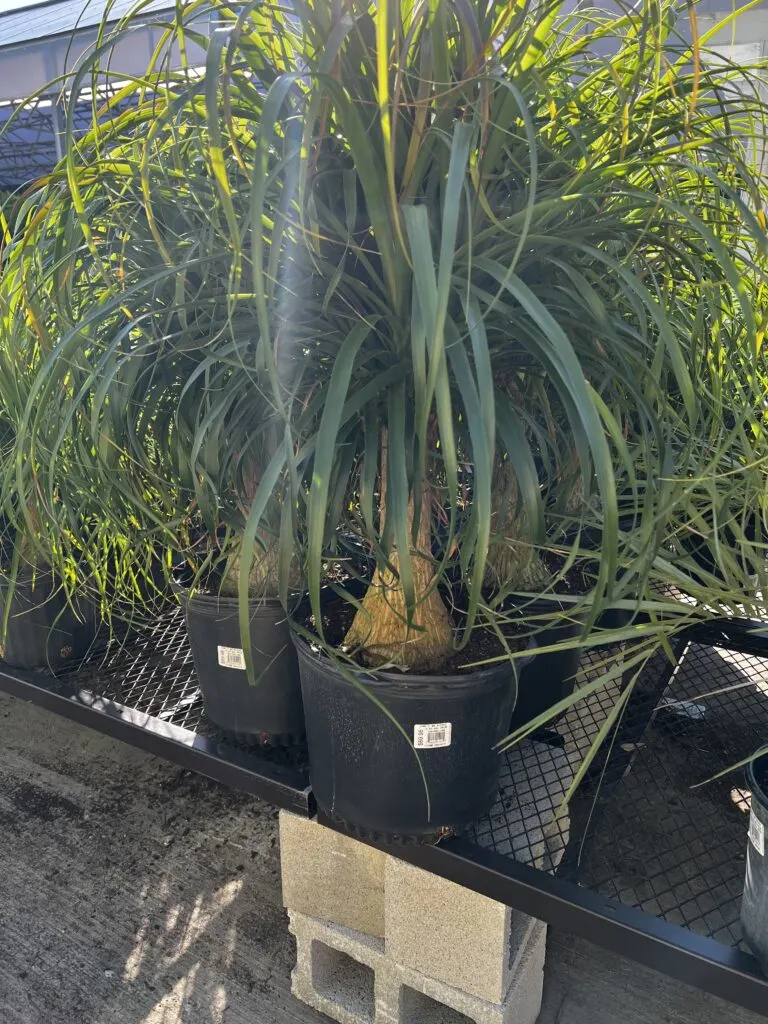Want to add a Ponytail palm to your houseplant collection? They are beautiful and easy to care for! Here’s my complete Ponytail palm care guide!
Living in Charleston, South Carolina, I see a lot of different palm plants. Fan palms, date palms, and palmettos grow naturally in the lush woods around our home.
If you are looking to bring a small palm tree in your home – may I suggest the ponytail palm? These cute lil palm trees make the perfect houseplant!
Free printable ponytail palm care PDF
Join the (free!) KeepYourPlantsAlive+ community to access this exclusive printable plant care guide! Once you sign up, you can right click & save the JPG care guide. Or keep scrolling for more!

What is Ponytail palm?
The Ponytail Palm is a fantastic slow growing evergreen perennial which can grow to 10 feet tall in the right conditions.
It forms an unusual bulbous trunk-like stem bearing a stunning mass of sword-shaped leaves up to 3 feet in length.
The Ponytail Palm is a brilliant houseplant, not only due to its unique form, but because it’s safe around pets and thrives on neglect.
Ponytail Palm care is therefore minimal, so a great houseplant choice for novices and experts alike!
Other names for Ponytail palm include:
- Beaucarnea recurvata
- Elephant’s foot
Ponytail palm origins
The Pony tail Palm is a caudiciform shrub or tree that is native to semi-desert areas of southeastern Mexico, Belize, and Guatemala.
Is Ponytail palm rare?
These beautiful palms are widely available and not considered rare. But they are still a great addition to any collection!
Is Ponytail palm toxic?
Pony tail Palms make a fantastic houseplant choice for people with pets as it’s non-toxic for cats and dogs.

Ponytail palm care guide
Pony tail palm plants are an easy to care for houseplant from the asparagaceae family.
Ponytail palm watering
You can water the plant well during Ponytail plant care, making sure the excess water drains away freely.
The interesting looking bulb-like base holds onto water (which means you don’t need to water it very often).
Read my guide on drilling drainage holes in pots!
How often should I water my Ponytail palm?
This will depend on the size of the pot and the growing conditions. These plants dislike overwatering, so I’d recommend you let the soil get quite dry before watering again.
Be sure that your plant is planted in well draining soil to help avoid the roots getting oversaturated.
Should I mist my Ponytail palm?
The Ponytail Palm does not need humid air to thrive and prefers dryer conditions, so there’s no need to mist the plant. It copes well in warm centrally heated rooms; a bright window or conservatory is the ideal place.

Ponytail palm lighting needs
The Ponytail Palm is native to semi-desert conditions and therefore prefers a well-lit spot with some direct sun. Try bright-indirect light indoors for best results.
Beware – too much full sun can make the leaves crispy. Bright light, but not getting cooked by the sun all day long, is best.
Can I keep Ponytail palm outdoors?
The Pony tail Palm is tender and should not be grown in air temperatures below 40°F in winter.
Ponytail palms planted in outdoors should be kept in pots unless you live somewhere that does not get too cold, even over night, in the winter.

Ponytail palm soil + potting
You can pot your Ponytail Palm in any good potting mix. Be sure to have drainage in the bottom of the pot to keep from getting stem rot.
Does Ponytail palm like to be root bound?
You only need to repot your Pony tail Palm when necessary, as they don’t mind being too root bound. Repot into a larger pot only a half an inch wider than the bulbous base.
Ponytail palm fertilization
You can use regular houseplant fertilizer on ponytail palms. Fertilize once per month in the warm growing season.
How to propagate Ponytail palm
Ponytail palm is best grown from seed and not propagated.
Troubleshooting Ponytail palm
Why does my ponytail palm have yellow leaves?
As the Ponytail Palm can store water in its bulbous trunk, the most common problems during Ponytail Palm care are a result of overwatering. Yellow leaves or a mushy trunk likely means overwatering. Therefore, it is better to underwater the Ponytail Palm rather than overwater.
Why does my ponytail palm have brown leaves?
Brown leaves, brown tips on the leaves, and/or a shriveled trunk will indicate that the plant is getting too dry so you can adjust your watering regime.
Any more questions about how to care for a ponytail palm?
Thanks for reading!


Hey there, I’m Morgan, a houseplant enthusiast from sunny Charleston, South Carolina. Growing up surrounded by my mom’s lush orchids and African violets, I discovered the magic of bringing nature indoors. Thanks to the pandemic, I delved deeper into houseplants, discovering their power to uplift moods and transform spaces. I’m here to spill all my secrets, helping you pick the perfect houseplant – and make it happy. Let’s keep your plants alive, together! 😊
